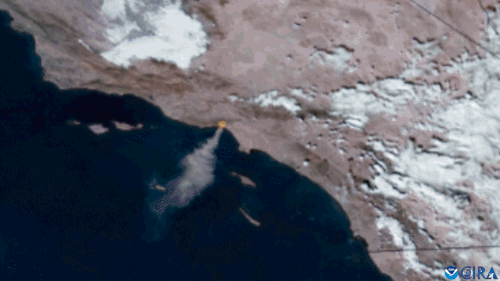Satellite images have shown a frightening aspect of the recent fire in Los Angeles.
According to RCO News Agency, Deadly fires continue to burn in parts of Los Angeles, and NOAA satellites continue to monitor the location of the fire and smoke across the region.
According to Spacey, The Palisades fire, which started on the morning of January 7th, reached about 3,000 hectares in less than 24 hours. Tens of thousands of people have been forced to evacuate their homes and leave their jobs, and more evacuation orders will be issued as strong winds continue.
Satellites in space, equipped to continuously photograph and monitor fires and smoke, provide critical information to local authorities, firefighters and weather forecasters.
The National Oceanic and Atmospheric Administration has two types of satellites that work in tandem to keep an eye on the fires. These two satellites are “Geostationary Operational Environmental Satellite” (GOES) and “Joint Polar Satellite System” (JPSS).
Both satellites are equipped with next-generation equipment to observe our planet, but the difference is that JPSS rotates in a polar, non-geosynchronous orbit at a distance of 824 km from Earth; While the GOES satellite is rotating above that point above the earth in a geosynchronous orbit at a distance of 35,786 km.
By using filters and various spectral bands installed on the equipment of both satellites, clear images can be recorded to show the spread and movement of fire and smoke in real time.
end of message
RCO NEWS
















